《海底两万里》写于1870年,是凡尔纳著名的三部曲中的第二部。这部作品叙述法国博物学家阿龙纳斯教授在海洋深处旅行的故事。故事发生在1866年,当时海上发现了一只被断定为独角鲸的大怪物。教授接受邀请搭乘林肯号战舰参加追捕,在追捕过程中不幸落水,泅到怪物的脊背上。其实这怪物是一艘当时尚不为人所知的构造奇妙的潜水艇。潜艇是船长尼莫在大洋中的一座荒岛上秘密建造的,船身坚固,利用海洋发电。尼莫船长邀请阿龙纳斯作海底旅行。他们从太平洋出发,经过珊瑚岛、印度洋、红海、地中海,进入大西洋,看到许多罕见的海洋动植物和水中的奇异景象,又经历了搁浅、土著人围攻、同鲨鱼搏斗、冰山封路、章鱼袭击等许多险情。最后,当潜艇到达挪威海岸时,阿龙纳斯不辞而别,把他所知道的海底秘密公布于世。
这部作品集中了凡尔纳科幻小说的所有特点。曲折紧张、扑朔迷离的故事情节,瞬息万变的人物命运,丰富详尽的科学知识和细节逼真的美妙幻想融于一炉。作者独具匠心,巧妙布局,在漫长的旅行中,时而将读者推入险象环生的险恶环境,时而又带进充满诗情画意的美妙境界;波澜壮阔的场面描绘和细致入微的细节刻画交替出现。内容引人入胜,让人欲罢不能。
英式发音 适合泛读
Chapter Six At Full Steam (Excerpt)
第六章 开足马力(节选)
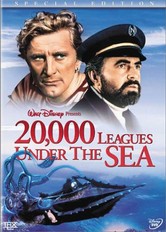 At two cable’s lengths from the Abraham Lincoln, on the starboard quarter, the sea seemed to be 1)illuminated all over. It was not a mere 2)phosphoric phenomenon. The monster emerged some fathoms from the water, and then threw out a very intense but 3)inexplicable light mentioned in the report of several captains. This magnificent 4)irradiation must have been produced by an agent of great shining power. The 5)luminous part traced on the sea an immense oval, much 6)elongated, the centre of which condensed a burning heat, whose overpowering brilliancy died out by successive 7)gradations.
At two cable’s lengths from the Abraham Lincoln, on the starboard quarter, the sea seemed to be 1)illuminated all over. It was not a mere 2)phosphoric phenomenon. The monster emerged some fathoms from the water, and then threw out a very intense but 3)inexplicable light mentioned in the report of several captains. This magnificent 4)irradiation must have been produced by an agent of great shining power. The 5)luminous part traced on the sea an immense oval, much 6)elongated, the centre of which condensed a burning heat, whose overpowering brilliancy died out by successive 7)gradations.
A general cry arose from the 8)frigate.
“Silence!” said the captain. “Up with the helm, reverse the engines.”
The steam was shut off, and the Abraham Lincoln, beating to port, described a semicircle.
“Right the helm, go ahead,” cried the captain.
These orders were executed, and the frigate moved rapidly from the burning light.
She tried to sheer off, but the supernatural animal approached with a 9)velocity double her own.
We gasped for breath. 10)Stupefaction more than fear made us dumb and motionless. The animal gained on us, sporting with the waves. It made the round of the frigate, which was then making 14 knots, and enveloped it with its electric rings like luminous dust.
Then it moved away two or three miles, leaving a 11)phosphorescent track, like those volumes of steam that the express trains leave behind. All at once from the dark line of the horizon 12)whither it retired to gain its momentum, the monster rushed suddenly towards the Abraham Lincoln with alarming 13)rapidity, stopped suddenly about 20 feet from the hull, and died out—not diving under the water, for its brilliancy did not 14)abate—but suddenly, and as if the source of this brilliant emanation was exhausted. Then it reappeared on the other side of the vessel, as if it had turned and slid under the hull. Any moment a collision might have occurred which would have been fatal to us. However, I was astonished at the 15)manoeuvres of the frigate. She fled and did not attack.
Towards two o’clock in the morning, the burning light reappeared, no less intense, about five miles to 16)windward of the Abraham Lincoln. 17)Notwithstanding the distance, and the noise of the wind and the sea, one heard distinctly the loud strokes of the animal’s tail, and even its panting breath. It seemed that, at the moment that the enormous 18)narwhal had come to take breath at the surface of the water, the air was engulfed in its lungs, like the steam of the vast 19)cylinders of a machine of two thousand horse-power.
At eight o’clock the fog lay heavily on the waves, and its thick scrolls rose little by little. The horizon grew wider and clearer at the same time.
The frigate approached noiselessly, stopped at two-cables-length from the animal, and following its track. No one breathed; a deep silence reigned on the bridge. We were not a hundred feet from the burning focus, the light of which increased and dazzled our eyes.
At this moment, leaning on the forecastle bulwark, I saw below me Ned Land grappling the martingale in one hand, 20)brandishing his terrible 21)harpoon in the other, scarcely 20 feet from the motionless animal. Suddenly his arm straightened, and the harpoon was thrown; I heard the 22)sonorous stroke of the weapon, which seemed to have struck a hard body. The electric light went out suddenly, and two enormous waterspouts broke over the bridge of the frigate, rushing like a torrent from stem to stern, overthrowing men, and breaking the 23)lashings of the spars. A fearful shock followed, and, thrown over the rail without having time to stop myself, I fell into the sea.
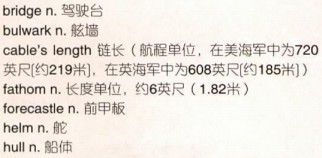
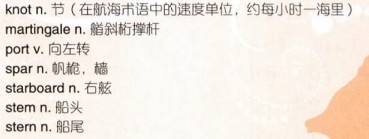
离林肯号右舷约三百七十米左右,整片海面好像被什么光照亮了。这光并不是一般海上常见的磷光。这个怪物潜在水面下十几米深的地方,就像好几位船长报告提到的那样,发出十分强烈而神秘的光。这种特别灿烂的光芒必定来自某种巨大的发光动力。发光的部分在海面上形成一个拉得很长的巨大椭圆形,椭圆形中心是发热的焦点,射出不可逼视的光芒,这光芒渐远渐淡,直至熄灭。
战舰上处处发出喊声。
“安静!”舰长说,“转舵,迎风开倒车!”
汽门立刻被关掉了,林肯号从左舷转了一百八十度。
舰长喊:“舵向右,向前开!”
以上命令执行了,战舰很快离开了发光的中心。
我们的船要离开,但那神秘的动物却以加倍的速度逼近。
我们倒抽了一口冷气。当时,惊呆麻木更甚于恐惧,弄得我们静默不动。这个怪物逼近我们的船,追逐着海浪。它绕着正以十四海里时速前进的战舰走,并且把船罩在像光尘一样的电光网中。
然后它走出两三海里远,后面拖着一条磷光的尾巴,好像列车后面那一团团烟雾般的气体。忽然间,这个怪物从它正在消失的天边尽头以惊人的速度突然向林肯号冲来,在离船身六米的海面上又突然停住,光全灭了——不是潜入水中,因为它的光不是慢慢地消散,而是猝然地,像光的来源突然耗尽了一般。接着,它又在战舰的另一边出现了,好像它翻了个身,然后从船底下潜过来。这期间撞击随时都会发生,这对我们来说会是致命的。可是我们战舰的行动使我莫名其妙。它在逃,并不去攻击。
快到早晨两点的时候,这耀眼的光在林肯号迎风面相距五海里远的海面重新出现,又散发着同样强烈的光。虽然相距很远,又有风声和浪声,我们还是清楚地听到这动物尾巴有力的搅水声,甚至还听到它的喘息声。这只巨大的独角鲸此时似乎浮到水面呼吸,将空气吸入它肺中,听起来好像是一台两千马力机器的巨大汽缸正在向外冒水蒸气。
八点,浓雾沉重地在海面上滚动,它那巨大的气团渐渐地散开了。天际也渐渐扩大,天色渐渐明朗起来。
战舰慢慢地向前靠近怪物,没有一点声息,离这动物三百七十米左右的时候停了下来,跟在它的后面。船上连呼吸声也听不到,驾驶台一片沉寂。我们距发光点不到30米了,亮度更为强烈,照得我们连眼睛也睁不开。
这时候,我靠在船头舷墙上,看见尼德·兰在我下方,一手拉着帆索,一手挥动他锋利的鱼叉,和这一动也不动的动物距离不到六米了。忽然,他的胳膊使劲地一伸,鱼叉投了出去。我听到鱼叉发出响亮的声音,像是碰上了坚硬的躯壳。眼前的电光突然熄灭,两团巨大的水猛喷到战舰驾驶台上来,像急流一般从船头冲至船尾,冲倒船上的人,打断了护墙桅的绳索。接着船被狠狠撞了一下,我没来得及站稳,从船栏杆被抛掷到海中去了。
翻译:旭文
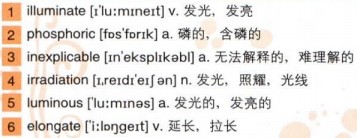

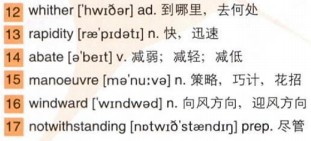
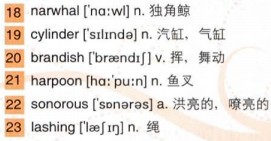
作者简介
儒勒·凡尔纳(Jules Verne, 1828.2.8-1905.3.25)是19世纪法国作家,著名的科幻小说和冒险小说作家,被誉为“现代科学幻想小说之父”。
1863年起,他开始发表科学幻想冒险小说,以总名称为《在已知和未知的世界中奇异的漫游》系列一举成名。他的代表作为三部曲:《格兰特船长的儿女》、《海底两万里》和《神秘岛》。
凡尔纳一生创作了长篇小说和短篇小说集共六十六部,还有几个剧本,一册《法国地理》和一部六卷本的《伟大的旅行家和伟大的旅行史》。主要作品还有《气球上的五星期》、《地心游记》、《漂逝的半岛》、《八十天环游地球》等二十多部长篇科幻历险小说。
潜水艇小史
18世纪70年代,美国人布什内尔建成一艘单人操纵的木壳艇“海龟”号,可使艇潜至水下6米,能在水下停留约30分钟。
1776年9月,“海龟”号潜艇偷袭停泊在纽约港的英国军舰“鹰”号,虽未获成功,但开创了潜艇首次袭击军舰的尝试。
19世纪60年代,在美国南北战争中,南方军建造的“亨利”号潜艇长约12米,呈雪茄形,用8人摇动螺旋桨前进,航速4节,使用水雷攻击敌方舰船。1864年2月17日夜,“亨利”号用水雷炸沉北军战舰“豪萨托尼克”号,首创潜艇击沉军舰的战例。
1880年9月,中国在天津建成第一艘潜艇,艇体形如橄榄,水下行驶,十分灵捷,可于水下暗送水雷,置于敌船之下。
1886年,英国建造的一艘使用蓄电池动力推进的潜艇成功地进行了水下航行,航速为6节,续航力约80海里。
1897年,美国建造了“霍兰”Ⅵ号潜艇,水面使用33千瓦(45马力)的汽油机动力装置,航速7节,续航力达到1000海里;水下使用电动机为动力,航速5节,续航力50海里,这是潜艇双推进系统的开端。
20世纪初,潜艇装备逐步完善,性能逐渐提高,出现具备一定实战能力的潜艇。第一次世界大战前,各主要海军国家共拥有潜艇260余艘,成为海军重要作战兵力之一。
第一次世界大战一开始,潜艇就被用于战斗。
